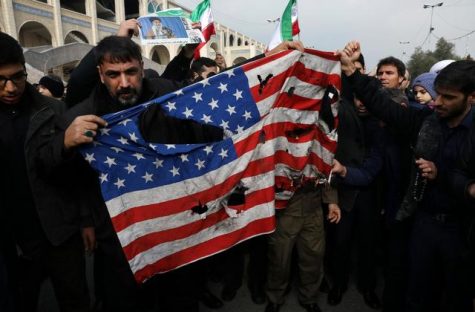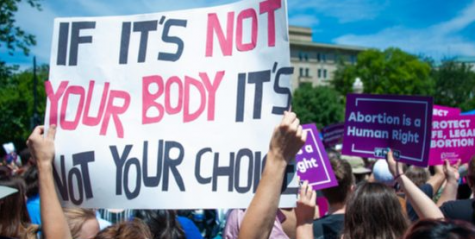The U.S.-Iran Conflict Explained
 On January 3, 2020, Iranian Major General Qassem Soleimani was killed in a drone strike near Baghdad International Airport in Iran. Ordered by U.S. President Donald Trump, the airstrike left 10 casualties and has greatly escalated tensions between the United States and Iran. With so many news sources reporting on this event and offering their own viewpoint towards this action, it is easy to become confused and overwhelmed regarding what actually happened and the reasoning behind the airstrike. With over 40 years of relations, the United States and the Iranian regime have been in some form of conflict since 1953. This long-standing history will hopefully offer some explanation to the recent events between the United States and Iran and possibly shed some light on what is to come.
On January 3, 2020, Iranian Major General Qassem Soleimani was killed in a drone strike near Baghdad International Airport in Iran. Ordered by U.S. President Donald Trump, the airstrike left 10 casualties and has greatly escalated tensions between the United States and Iran. With so many news sources reporting on this event and offering their own viewpoint towards this action, it is easy to become confused and overwhelmed regarding what actually happened and the reasoning behind the airstrike. With over 40 years of relations, the United States and the Iranian regime have been in some form of conflict since 1953. This long-standing history will hopefully offer some explanation to the recent events between the United States and Iran and possibly shed some light on what is to come.
Conflict between the United States and Iran began in 1953 during the Eisenhower Administration. Working together, U.S. and British intelligence agencies organized a coup to overthrow Mohammed Mossadegh, the democratically elected Prime Minister at the time. This coup would restore power to the Shah, Mohammed Reza Pahlavi. Although Mossadegh was elected democratically, his administration actively worked to prevent the British from gaining access to Iranian oil. Although U.S. intelligence was not originally interested in becoming involved in these tensions, they were eventually persuaded by British forces and assisted in organizing a propaganda campaign against the prime minister. Although the coup was a success, it soured American opinion of Iran and set the stage for future tensions with the Middle Eastern nation. Surprisingly, in the years of 1957-1979, the United States and Iran showed great cooperation in the midst of the Cold War and the Nuclear Arms Race.
However, tensions truly escalated between Iran and the United States from the years of 1979-1981. After a brutal revolution and instability in the region, Iran is left withered and suspicious of any American aid to rebuilding their nation. On November 4, 1979, a mob of students storm the U.S. embassy in Tehran, taking over 60 American marines and diplomats hostage. The Iranian government initially supports the students and allows them to hold the Americans hostage within the country. In response, the Carter Administration freezes $12 billion in Iranian assets and imposes sanctions. Although this was intended to force Iran into a compromise, the Iranians continued to hold these Americans hostage. Despite high tensions for a few years, Carter and his Cabinet announce a settlement with Iran in January 1981.
With the escalation of the Iran-Iraq War between 1980-1988, the United States deemed Iran to be a sponsor of terrorism. In response to this designation, the Reagan Administration imposed severe sanctions on Iran. After these sanctions were imposed, tensions continued with Iran regarding terrorism and sponsoring violence in the Middle East until nearly the end of the century. Beginning in 1997, President Clinton announced that the relationship between the United States and Iran was looking “hopeful” and stated that he wished to build a relationship with them. However, this hopeful attitude towards the Iranian regime does not last long, seeing as the September 11, 2001 attacks essentially reset American opinion of Iran and soured public opinion once more. President George W. Bush launches his War on Terror after these events, including Iran in the “Axis of Evil.”
Beginning with the Obama Administration, tensions with Iran largely stalled and were not as intense in comparison to previous years. Although the relationship between the United States and Iran was not particularly violent at this time, American opinion of Iran has seemed to be entirely ruined at this point in history. Although cooperation between Iran and the Obama Administration was possible, this somewhat friendly relationship abruptly ended when 45th President Donald Trump took office in 2017. In his first few years in office, Trump holds Iran responsible for multiple acts of extremism across the Middle East and announces that the United States is withdrawing from the Iran nuclear deal. With this resignation from the nuclear deal came with harsh sanctions, once again increasing tensions between the two nations. Beginning in 2019, Iranian aggression begins to become increasingly prevalent, seeing as the Iranian government orchestrates multiple attacks on American oil tankers. Just last month, an Iranian attack on U.S. military sites in Iraq render an American citizen dead.
As a response to this increased aggression and loss of American lives, President Donald Trump authorized an airstrike on Baghdad International Airport without congressional approval and killed Major General Qassem Soleimani. In response, on January 7, 2020, Iran launched several ballistic missiles at military bases Ain al-Assad, Iraq, which house American military forces. Although there were no casualties in this strike, President Donald Trump has announced that the United States will not back down from Iran and their forces. Despite the severity of the situation, the Trump Administration has also announced that negotiations with Iran are not out of the question in the future.
With the history of U.S.-Iran relations explained, the true controversy lies in whether it was necessary to contain Iranian aggression by assassinating Major Soleimani. Qassem Soleimani was well known for being the commander of ther Quds Force and orchestrating multiple extremist and terrorist attacks across the Middle East. When discussing the controversy of the U.S.-Iran tensions, the question does not lie in Soleimani’s intentions. It is known and proven that Soleimani had malicious intentions and was responsible for multiple American casualties. American public opinion over whether the airstrike to assassinate Soleimani is quite split, generally aligning with the two major political parties of the nation.
The Republican Party and those who support the Trump Administration stand behind Trump’s decision to launch the airstrike and assassinate Soleimani. They believe the Iranian threat was to a dangerous level and that this precaution was necessary in order to stabilize the region and eliminate any threat of losing American lives.
“He should have been take out many years ago!” Trump tweets after the airstrike to his 70.3 million Twitter followers.
The Trump Administration also believes that the missile strikes on U.S. military bases in Iraq is not a major threat. The administration does not believe that a war is necessary and that proper negotiations can be made in order to stabilize the Middle East and return to peace in the region.
However, the Democratic Party greatly disagrees with Trump’s decision, which was unauthorized by Congress, to launch the airstrike and assassinate Soleimani. They are not persuaded that the threat was imminent and believe that the airstrike only led to greater instability within the region. Alexandria Ocasio-Cortez, a Democrat Representative from New York, believes that the Soleimani strike “risks millions of lives of innocent people.”
Although the opinion regarding the U.S.-Iran conflict is largely a personal one, it is important to consider not only American lives, but innocent Iranian lives as well. In these times of instability and fear, we must keep a global perspective and understand the true severity of this issue. Hopefully, the situation will be resolved peacefully and life will continue on in both the United States and Iran. However, only time will tell if both nations are able to do so.

Emily Vero is currently a senior at Mohawk Jr./Sr. High School. As a passionate writer, she has been working on The Arrow since her junior high years....







